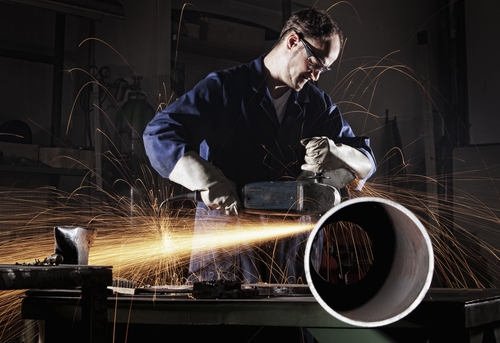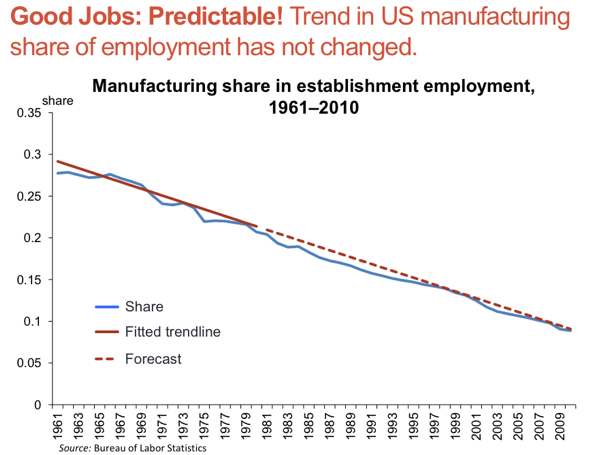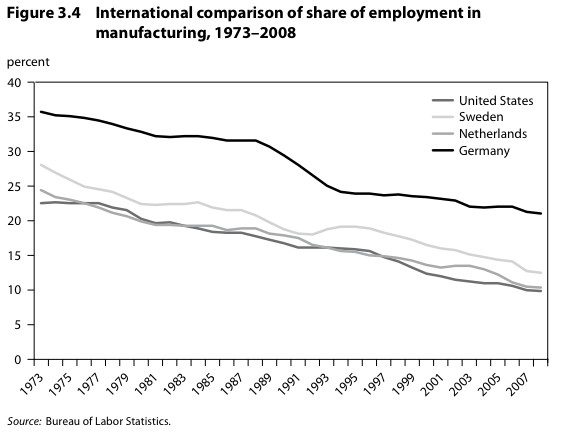This Chart Will Change How You Think About Manufacturing
Dylan Matthews
This chart, contained within slides of a presentation by Robert Z. Lawrence and Lawrence Edwards promoting their new book “Rising Tide: Is Growth in Emerging Economies Good for the United States?,” is quite something.
What this shows is that the decline in manufacturing as a share of overall employment has been ongoing since the 1960s and 1970s, and has not really picked up pace in recent decades.
Consider what this means. If someone had cornered you in 1980 and asked you to predict what the level manufacturing employment would be at in 2009, and you did a straightforward linear projection of the previous two decades, you would have gotten it almost exactly right. You wouldn’t have known about the fall of the Soviet Union or the rise of China or the scale of advances in international communication or automation, but you still would have gotten it almost exactly right.
Their book goes on to show that similar declines have happened, at roughly the same pace, all around the world.
Consider what this means. If someone had cornered you in 1980 and asked you to predict what the level manufacturing employment would be at in 2009, and you did a straightforward linear projection of the previous two decades, you would have gotten it almost exactly right. You wouldn’t have known about the fall of the Soviet Union or the rise of China or the scale of advances in international communication or automation, but you still would have gotten it almost exactly right.
Their book goes on to show that similar declines have happened, at roughly the same pace, all around the world.
“These data suggest a cause that is common, pervasive and not closely related to the size of the trade balance,” the authors conclude.
Rather, the change is due to rapid productivity growth. That is, automation is reducing the amount of labor required to produce a given amount of goods. That means that prices fall. If people respond those price changes by buying more and more of the underlying good, then sales will increase and employment may not fall. But that’s not happened. Instead, people are saving money on manufactured goods and buying more services, instead. That’s led to the decline in manufacturing jobs.
Rather, the change is due to rapid productivity growth. That is, automation is reducing the amount of labor required to produce a given amount of goods. That means that prices fall. If people respond those price changes by buying more and more of the underlying good, then sales will increase and employment may not fall. But that’s not happened. Instead, people are saving money on manufactured goods and buying more services, instead. That’s led to the decline in manufacturing jobs.
SOURCE: The Washington Post






Leave a Reply
Want to join the discussion?Feel free to contribute!